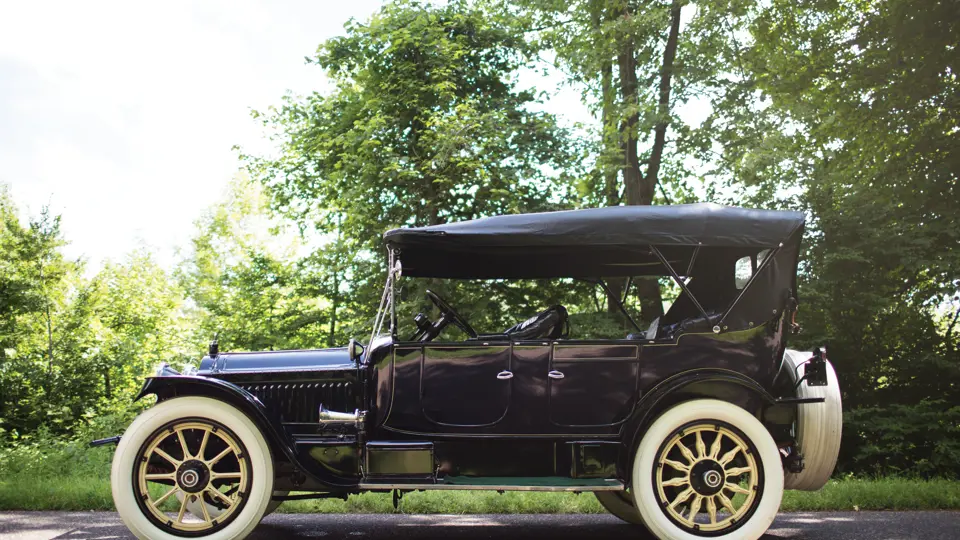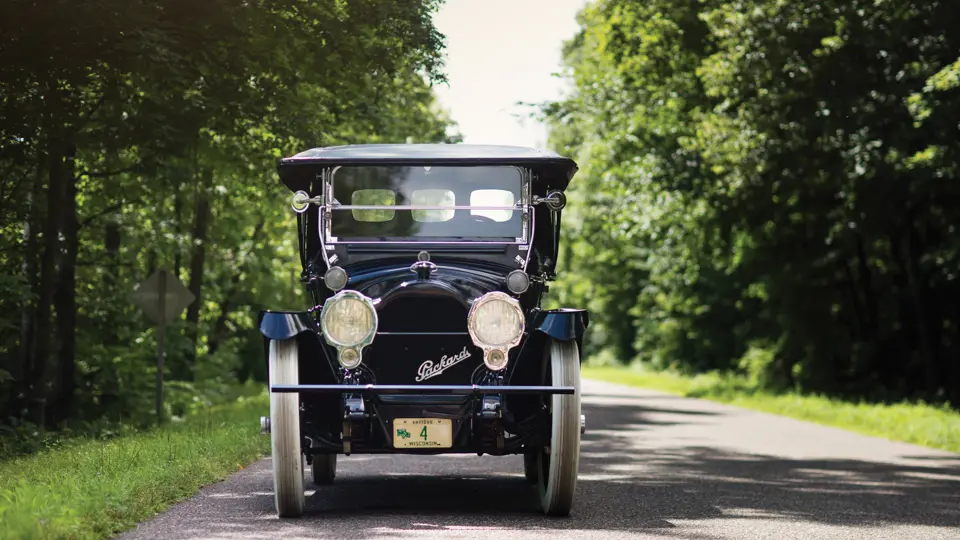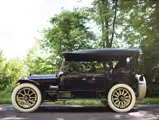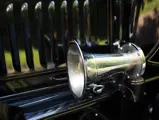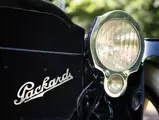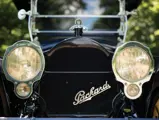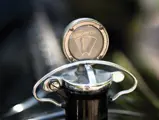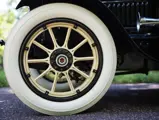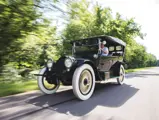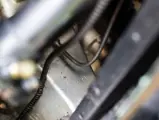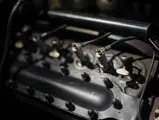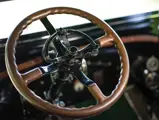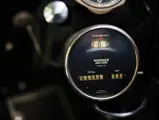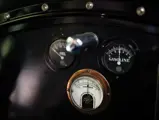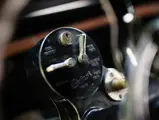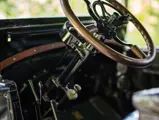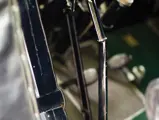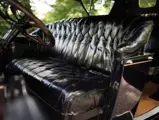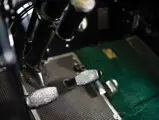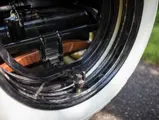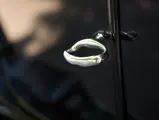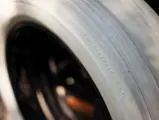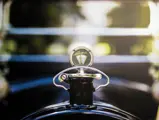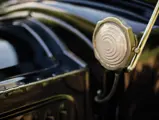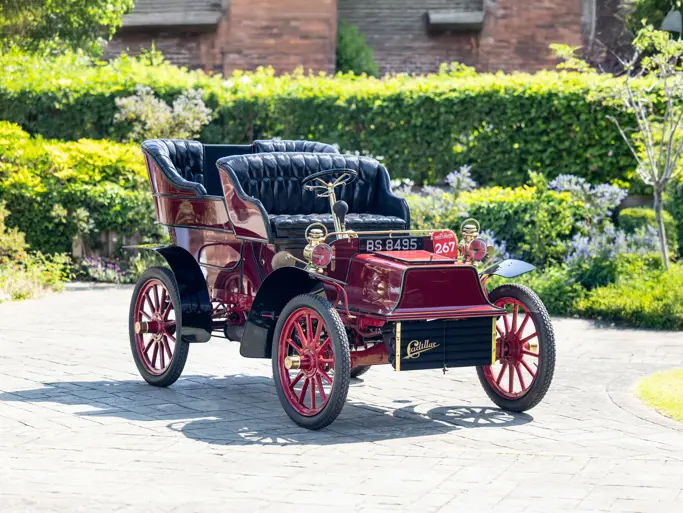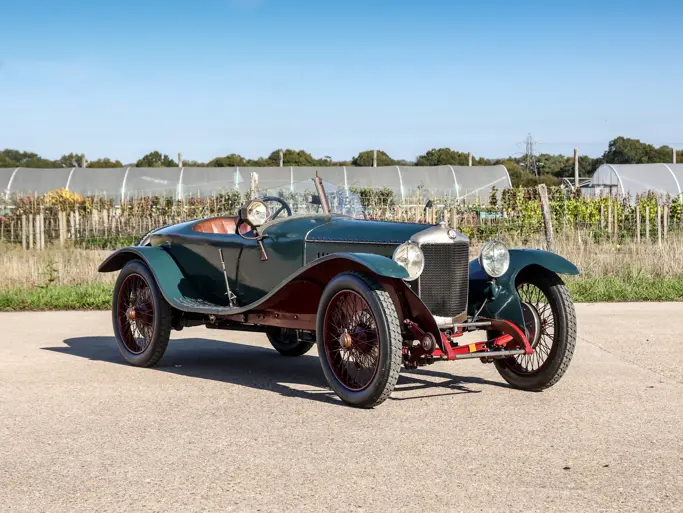Series 1-25. 88 bhp, 424.1 cu. in. L-head V-12 engine, three-speed manual gearbox, solid front axle and live rear axle with semi-elliptical leaf springs, and two-wheel mechanical brakes. Wheelbase: 125 in.
The Packard Motor Car Company was well established as a manufacturer of prestige cars by 1915, its record of owner satisfaction demonstrated by adoption of the slogan, “Ask the Man Who Owns One.” But its record as a builder of four- and six-cylinder cars was about to change, as a new engine was on the verge of introduction.
Called the “Twin Six,” it debuted in May 1915. A 60-degree V-12, with two blocks of six cylinders set on an aluminum crankcase, it was designed by chief engineer Jesse Vincent, displaced 424 cubic inches, and developed 88 horsepower. Motor Age enthused, “Never before have the principles of high-speed motor design been applied to a touring car engine of so large a size as this new Packard. It needs but little handling to realize that the result is not merely encouraging, but in excess of all possible expectations.” Enthusiasts generally refer to the first Twin Sixes as 1916 models, although Packard eschewed model years until the 1930s.
Offered as the sole engine for the new First Series cars, it was available in two wheelbases, 125 and 135 inches, and a myriad of body styles priced from $3,050 to $5,150. By the time its successors, the 2-25 and 2-35, appeared in August 1916, nearly 8,000 had been built. It outsold the nearest luxury competitor, Pierce-Arrow, by four-to-one that year, and nearly eight-to-one the next.
Variations on the Twin Six were Packard’s only offerings through 1920, when a lighter and less expensive car, variously referred to as the Single Six, Light Six, or Series 116, joined the line in September. Not until 1932 would Packard offer another 12-cylinder car. Although called “Twin Six,” the new engine was not at all like the original item. Thereafter, the company called it simply “Twelve.”
The early history of this car is unrecorded. In the 1950s, it was owned by Harry D. Horton, of Springfield, Missouri. In 1958, it went from Harry Horton to George V. Horton, also of Springfield. In December 1967, it was purchased by Bradley Skinner, of Bartlesville, Oklahoma. A year or so later, the current owner bought it from Mr. Skinner.
The car was enjoyed on tours and other events for several years. In the 1980s, the owner and his grandfather commenced a body-off restoration, which it now wears. Rather than scrutinize, repair, and replace every nut and bolt, they undertook what really needed doing yet preserved original features where they could. As a result, some of the nickel trim is less than perfect. The engine was gone through, but the original pistons and bearings were retained as the valves were brought up to standard.
Very handsome in deep blue, it has black buttoned leather upholstery and a black canvas top. The rear compartment has jump seats for two. Instrumentation is quite comprehensive for its era, comprising a Warner AutoMeter, a Waltham eight-day clock, gauges for oil pressure and gasoline, and an ammeter. The engine compartment is clean but shows signs of use, as the car is toured regularly, most recently on a Horseless Carriage Club of America tour in 2014. It starts easily and drives well.
It is said that specific car models are at their purest in their first year on the market and that successive updates start to dilute the essence of the original design. This car, built within months of the Twin Six introduction, is about as pure as you can get.
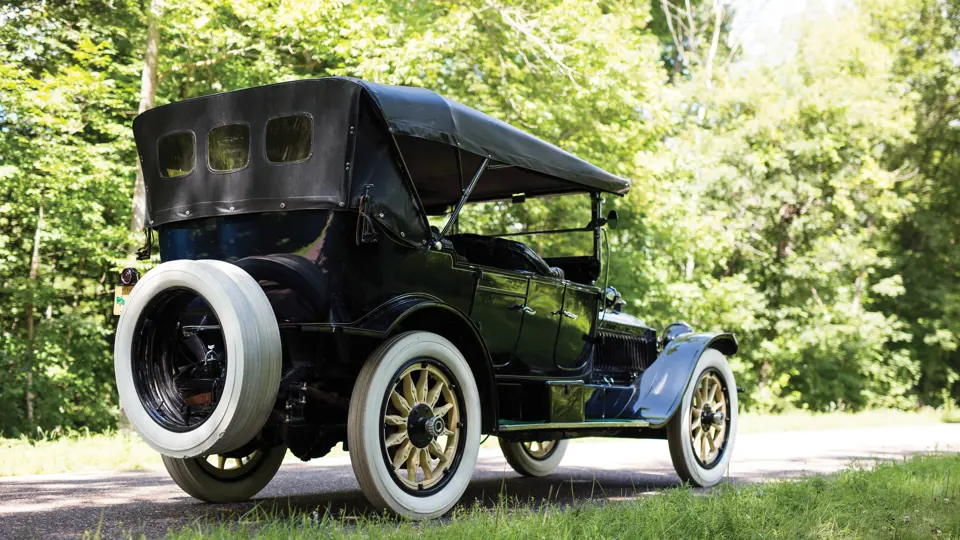






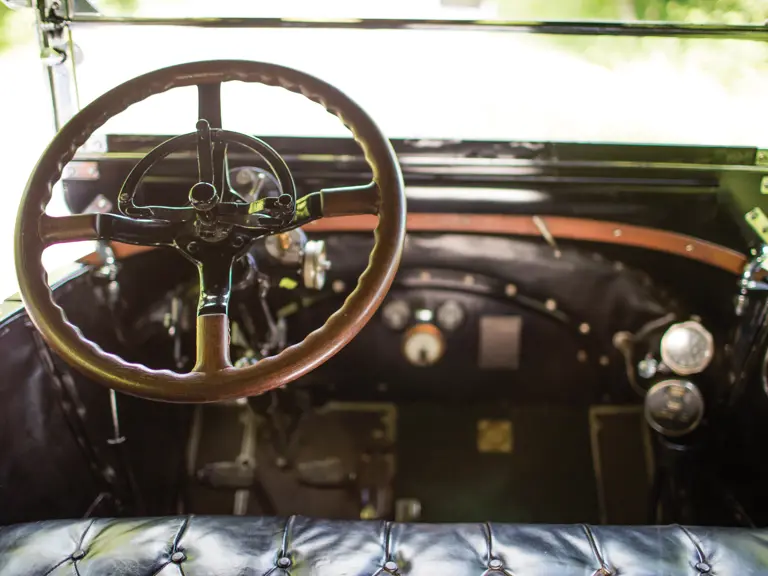
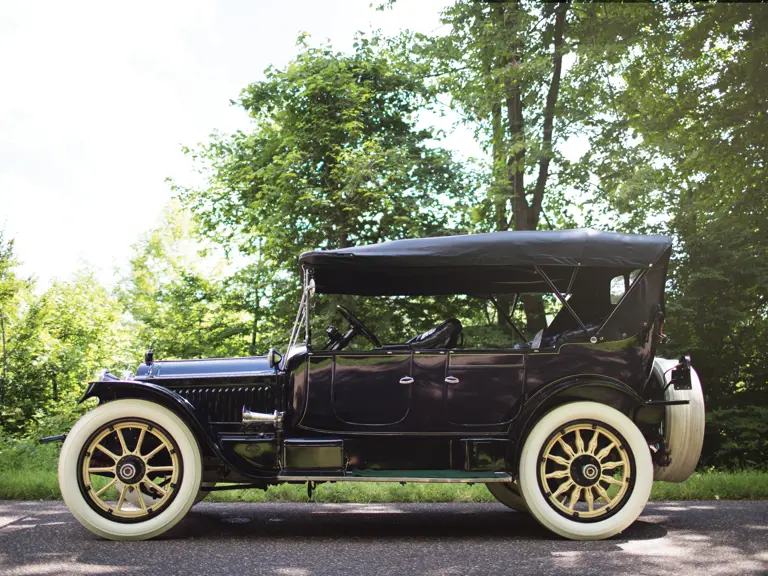
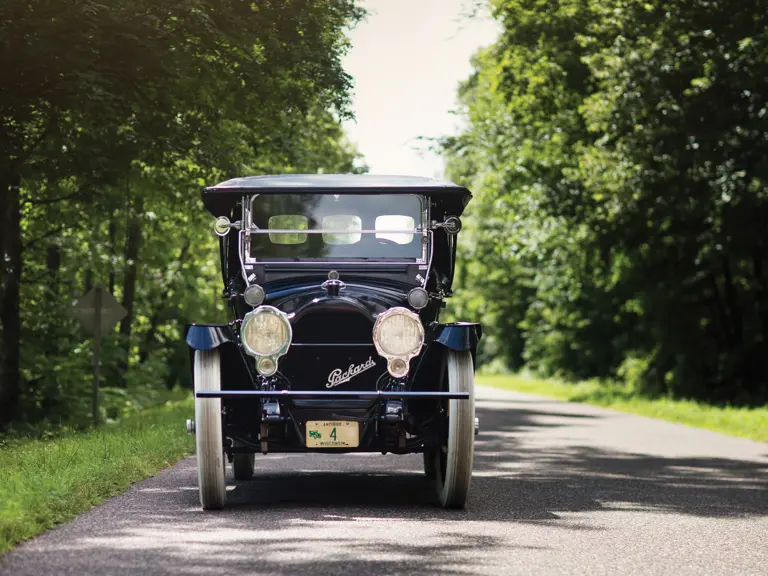

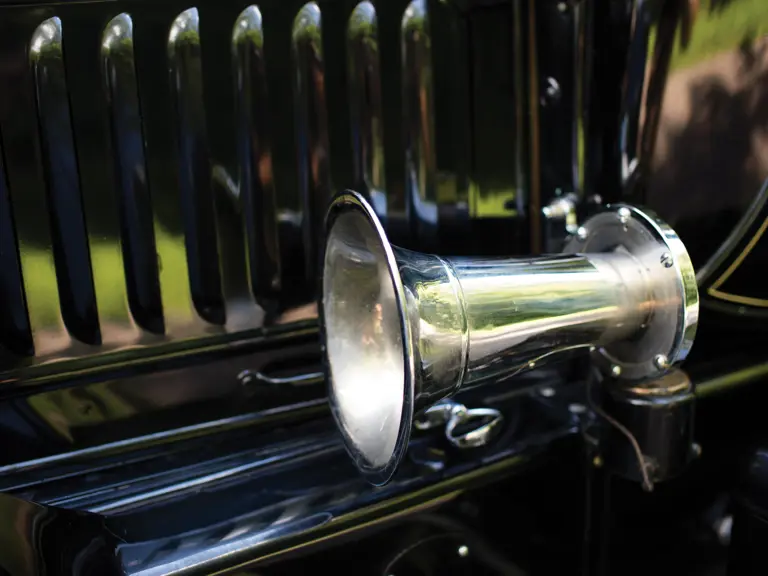

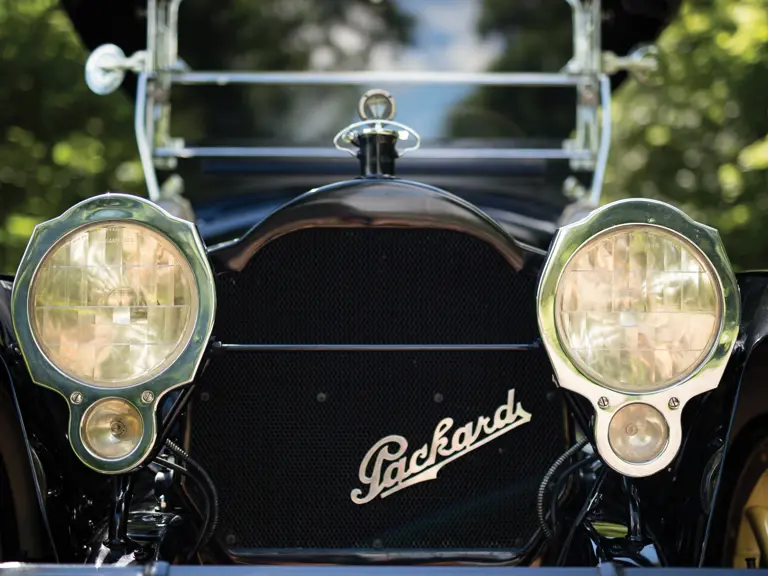

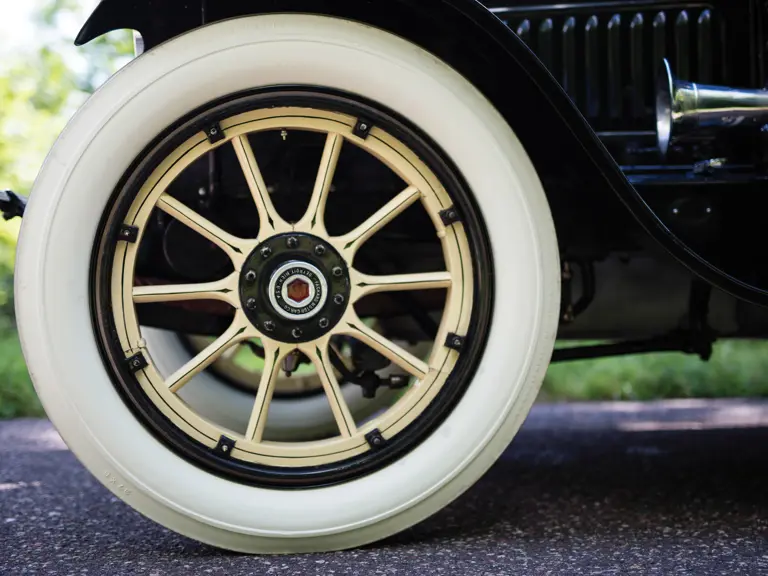
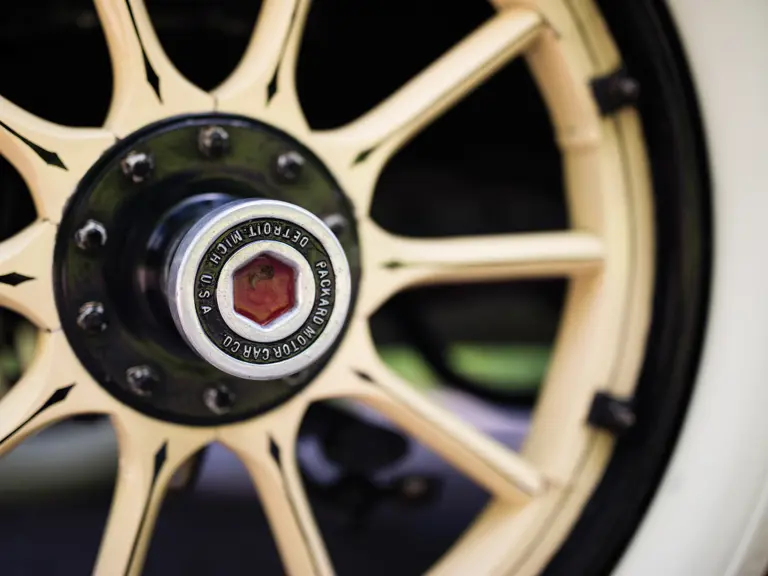
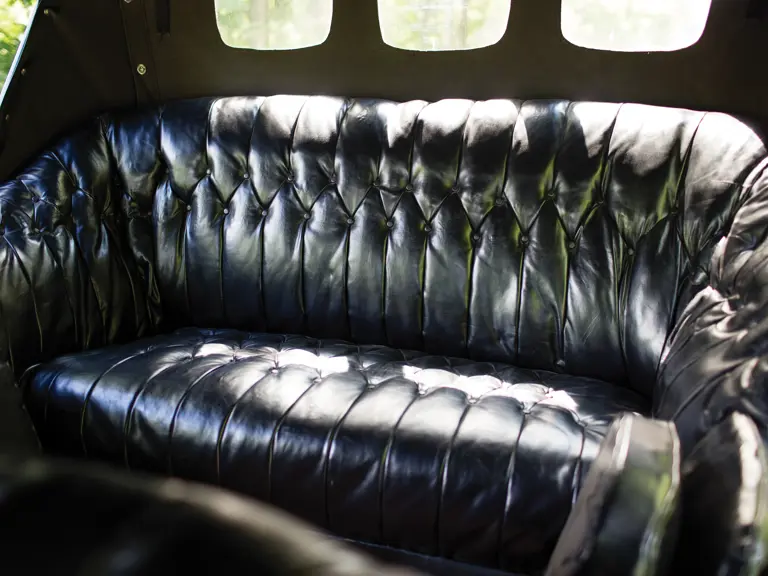

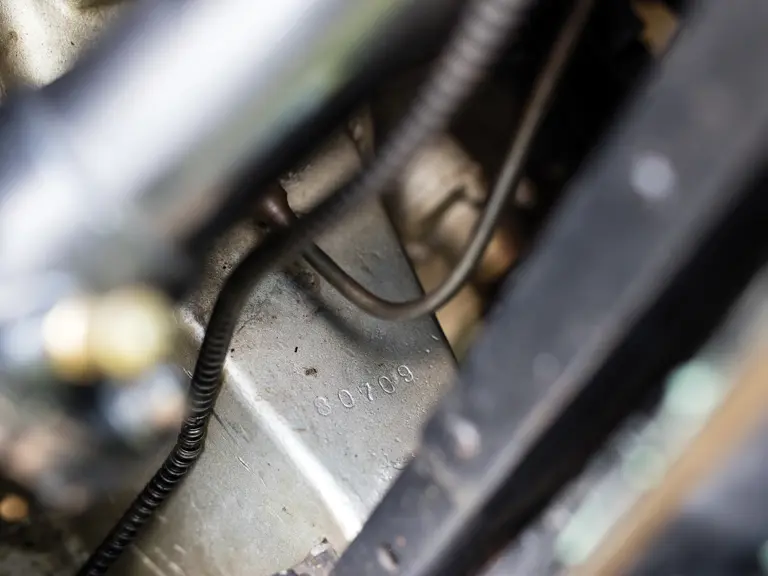
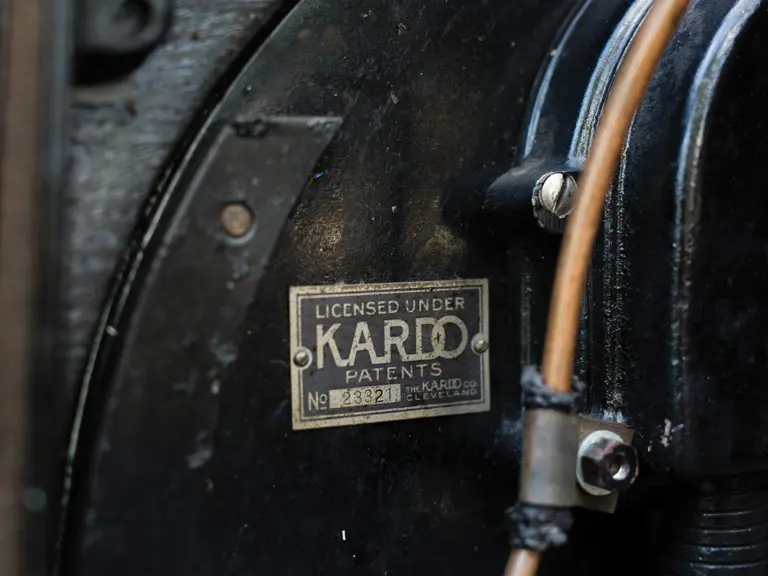
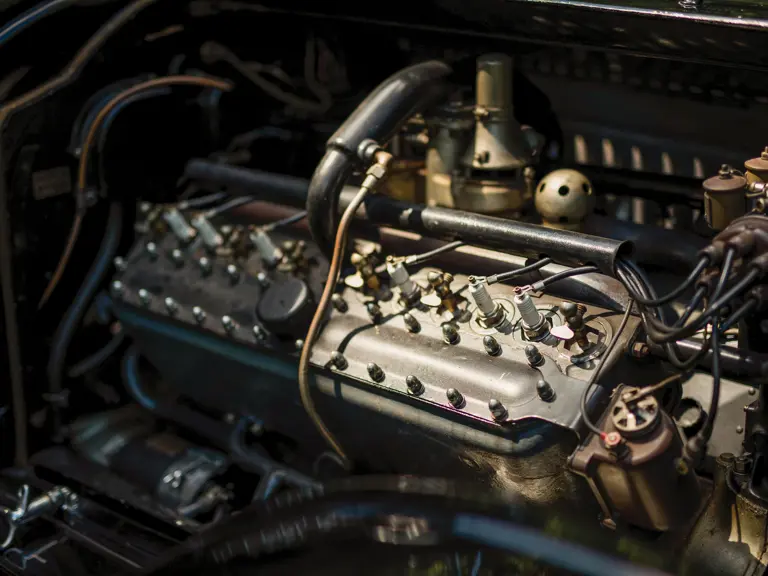



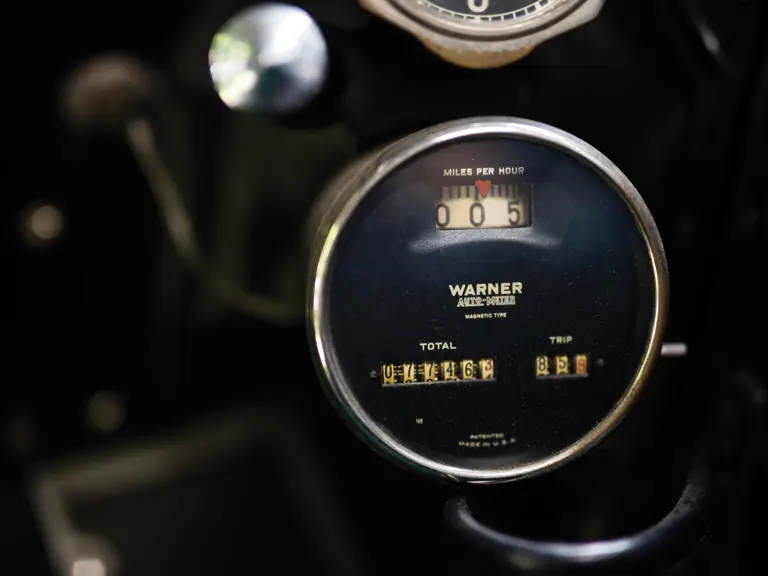
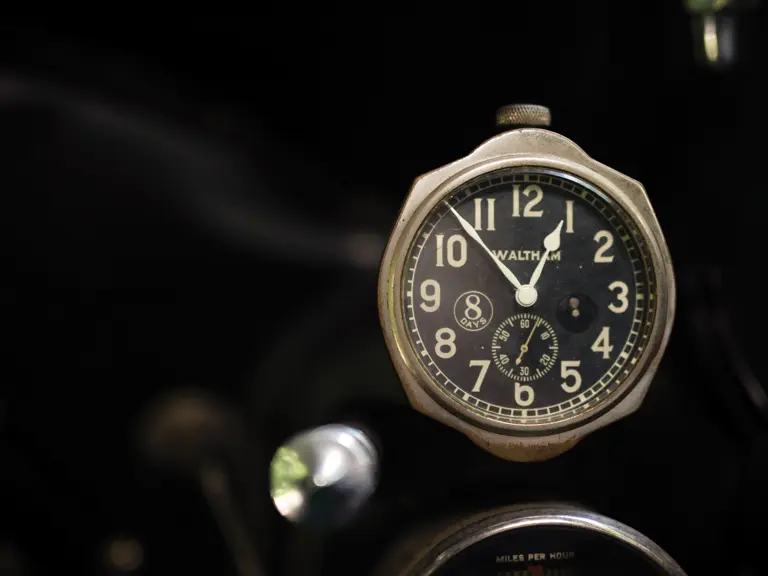

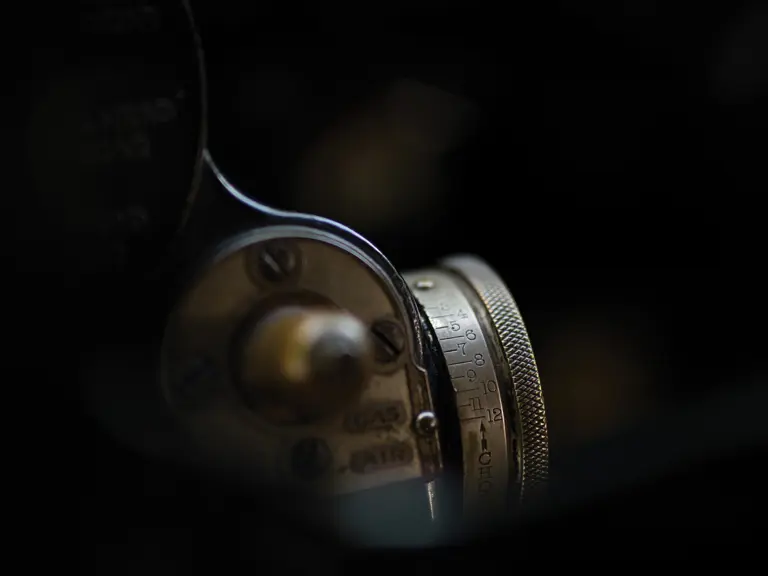


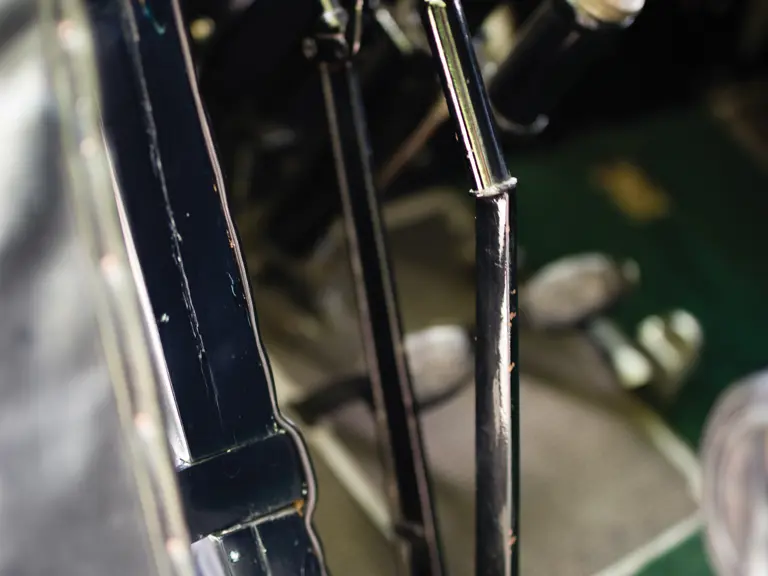
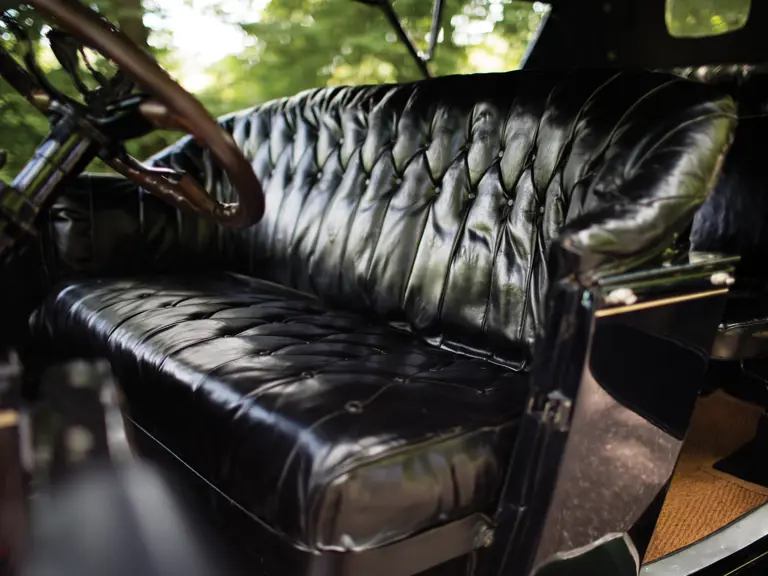
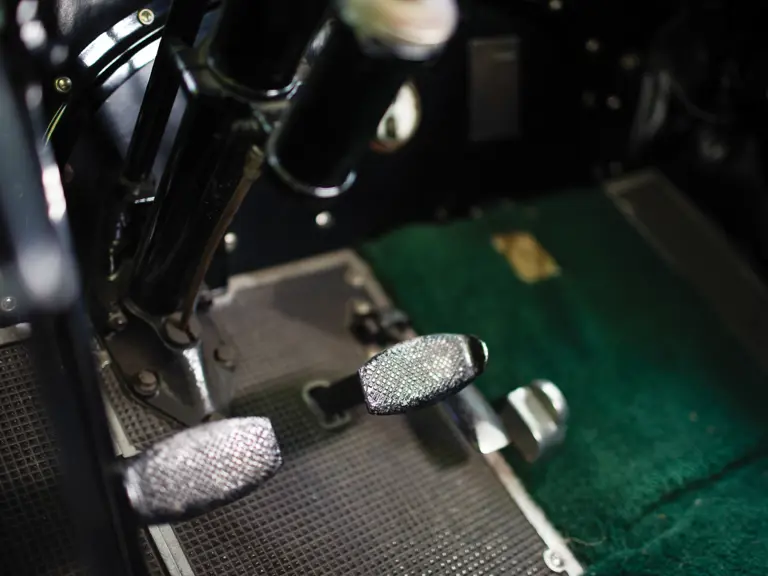

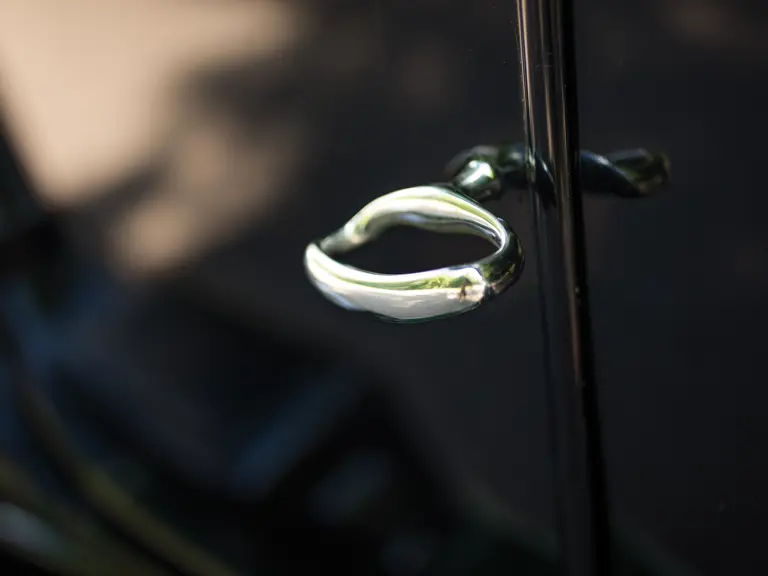
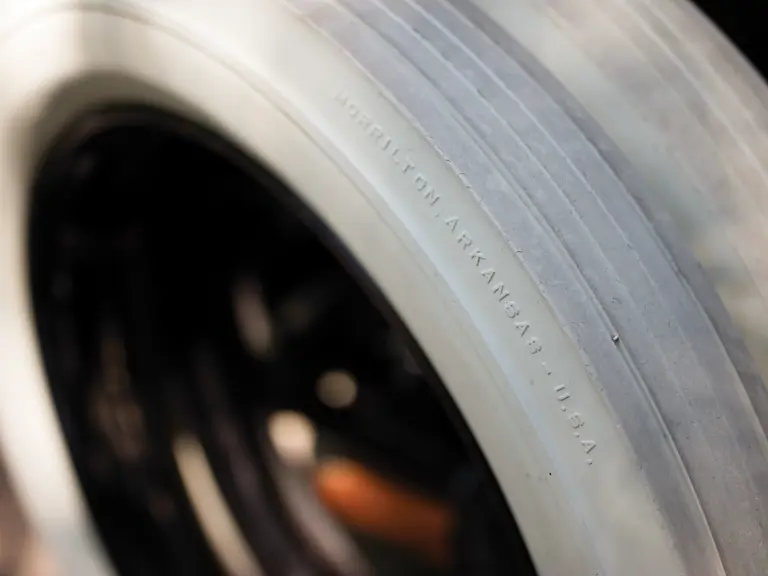

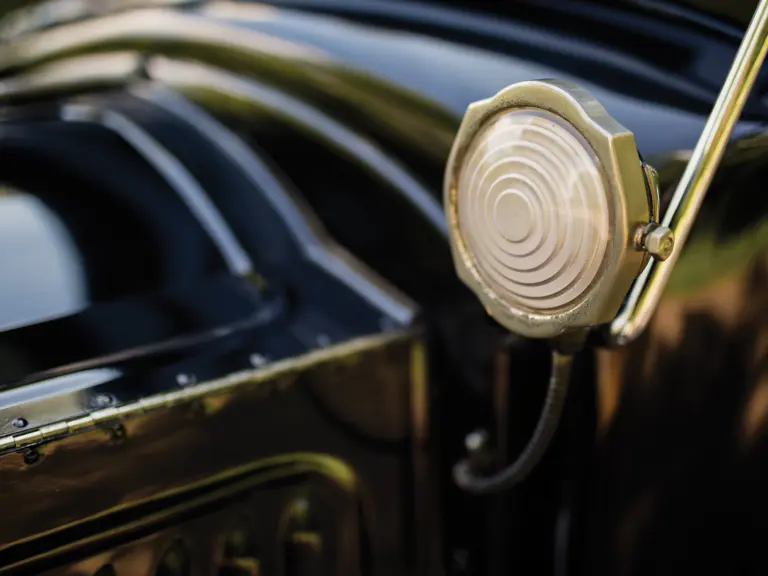

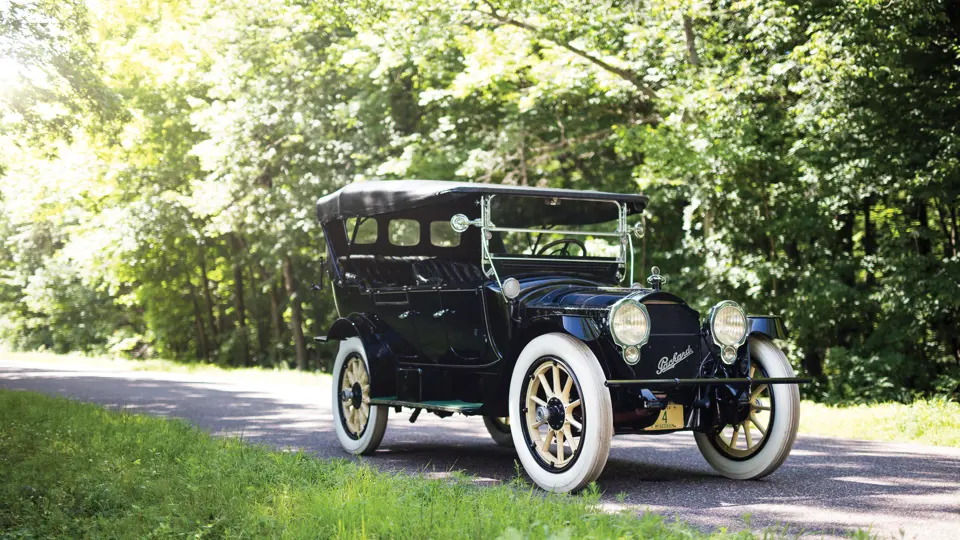
 | Hershey, Pennsylvania
| Hershey, Pennsylvania
